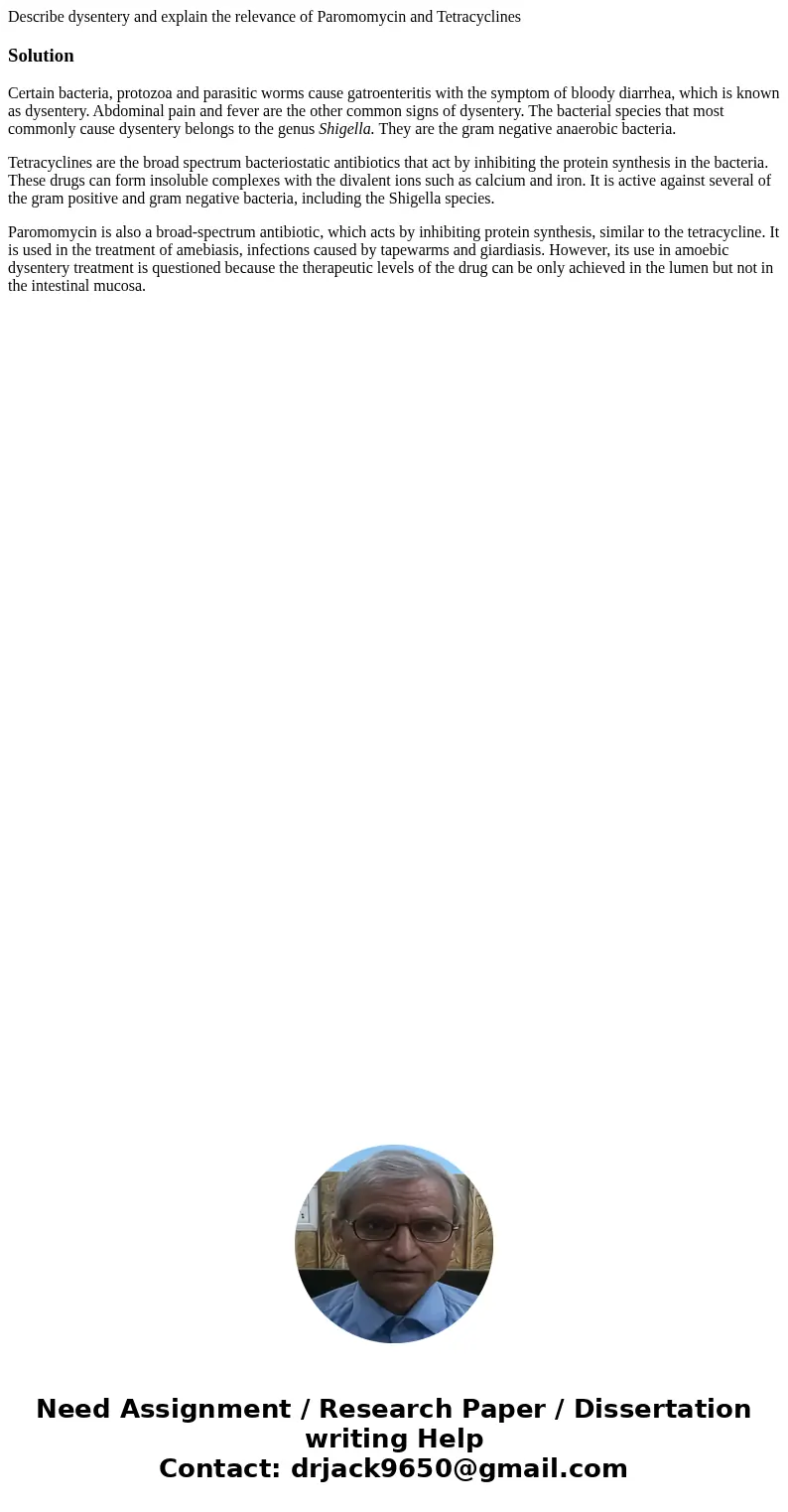Describe dysentery and explain the relevance of Paromomycin
Describe dysentery and explain the relevance of Paromomycin and Tetracyclines
Solution
Certain bacteria, protozoa and parasitic worms cause gatroenteritis with the symptom of bloody diarrhea, which is known as dysentery. Abdominal pain and fever are the other common signs of dysentery. The bacterial species that most commonly cause dysentery belongs to the genus Shigella. They are the gram negative anaerobic bacteria.
Tetracyclines are the broad spectrum bacteriostatic antibiotics that act by inhibiting the protein synthesis in the bacteria. These drugs can form insoluble complexes with the divalent ions such as calcium and iron. It is active against several of the gram positive and gram negative bacteria, including the Shigella species.
Paromomycin is also a broad-spectrum antibiotic, which acts by inhibiting protein synthesis, similar to the tetracycline. It is used in the treatment of amebiasis, infections caused by tapewarms and giardiasis. However, its use in amoebic dysentery treatment is questioned because the therapeutic levels of the drug can be only achieved in the lumen but not in the intestinal mucosa.

 Homework Sourse
Homework Sourse